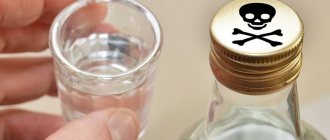Brake fluid is necessary for the normal functioning of the braking system of any car. Therefore, its level and availability must be monitored. But sometimes it still happens that liquid leaks out along the way due to various malfunctions that lead to a violation of the tightness of the system. What to do in this case?
Of course, when going on a long journey, it is advisable to take brake fluid with you, along with motor oil, antifreeze and other necessary technical fluids and consumables, as well as spare parts. But not all car owners follow this advice. Therefore, some of them often find themselves in a situation where the brake fluid unexpectedly leaked out, and there is not a single auto shop nearby or it happened late at night. There is no one to expect help from, but we still have to go. It turns out that other fluids that can be temporarily filled instead of brake fluid can help in this case. These include:
- distilled water. But when using it, you should know that in the summer it can boil, and in the winter it can freeze;
- alcohol. True, it can boil;
- Antifreeze windshield washer fluid. It is also subject to boiling;
- power steering fluid;
- antifreeze.
Antifreeze or antifreeze has virtually no side effects and can easily be temporarily used instead of brake fluid. In addition, it is much easier to find than other liquids from the above list. Many car owners carry cans of antifreeze with them. Therefore, most likely, there will definitely be such a container in the trunk. And to use such fluid instead of brake fluid, you will need very little antifreeze. This is quite enough to get to your home or repair site.
What is ethylene glycol?
Glycol – refers to industrial alcohols used as solvents. As is already clear, it has a liquid consistency, is odorless and colorless, and tastes slightly sweet.
Ethylene glycol is a dangerous substance for humans, which, if it enters the body, can cause severe intoxication.
Glycols and ethylene glycols are derivatives of alcohols that are used in industry as solvents and degreasers for various purposes. Ethylene glycol is popularly known as industrial alcohol. It is the effect of alcohol intoxication that glycol can cause that certain categories of citizens take it orally. Poisoning with glycol-containing substances is a common occurrence in our life, often leading to a fatal outcome. The cause of death is determined by forensic medical examination methods. Even inhaling its vapors can lead to severe poisoning. As medical practice shows, for the majority of those who took it, the notorious 100 grams turned out to be a lethal dose.
Prevention measures
To avoid nuclear fuel poisoning, it is enough to follow standard preventive measures:
- When in contact with toxic liquids, wear protective clothing and shoes.
- Work with nuclear fuel in well-ventilated areas. If the permissible concentration of poison in the inhaled air is exceeded, use a gas mask or other protective equipment.
- Observe safety precautions at work and at home.
- Keep liquids used in everyday life out of the reach of children.
Despite their wide scope of application, technical fluids pose a particular danger to humans, and poisoning with them leads to serious consequences for health and life. Timely first aid significantly alleviates the condition of the victim and improves his prognosis for recovery.
Poisonous gases: carbon dioxide, household gas, methane, hydrogen sulfide.
In case of poisoning with poisonous gases:
- Remove the victim from the danger zone and into fresh air.
- Lay the victim down and unfasten his clothes. Apply cold to your head
- Rub your chest and body. Cover warmly. Give ammonia a whiff
If the condition worsens, give plenty of sweet drinks (tea).
If you lose consciousness for more than 4 minutes, turn over on your stomach and apply cold to your head.
Principle of action of the substance
Ethylene glycol poisoning occurs not only when the substance is ingested, but also when its vapor is inhaled. Naturally, the severity of intoxication in these cases varies significantly. But it should also be taken into account that each person’s body reacts to the substance differently.
Entering the body in liquid form, ethylene glycol acts as follows:
- The substance disintegrates and is absorbed into the blood;
- The main mass fraction of the substance settles in the liver, brain and kidneys;
- On the third day after consumption, the kidneys excrete the substance partially, approximately 13 times the amount of glycol consumed;
- The remaining shares of the substance break down into oxalic acid and glycol aldehydes, which are what cause intoxication in the body.
Warming up the system
When braking, the discs or drums become very hot. Actually, this is a law of physics, friction occurs - brake pads rub against a metal surface, and a large release of heat occurs. The pads are made of a special “thermal” and “wear-resistant” material, so they can run for a very long time; this material does not heat up so much when compared to discs or drums.
But their heating can be simply catastrophic (especially at the front axle) there are a lot of videos on the Internet where they get “red hot”.
And what happens is that parts of the brake system, namely pistons, cylinders, and the calipers themselves experience enormous temperature loads. At high speeds, temperatures can reach up to 150 degrees Celsius. Do you know what I mean? Actually, now we’ll start talking about the compositions.
Poisoning scheme
The poisoning process itself includes three stages:
- Primary poisoning with ethylene glycol occurs at the stage of its use, when the substance is absorbed into the blood, which causes a state of intoxication; the duration of the stage is from 10 to 12 hours, depending on the amount taken orally and the complexion of the person;
- Next, the substance begins to affect the functioning of the nervous system, and the poisoning enters the neurotoxic stage, the signs of which are disturbances in breathing and heart function;
- The third stage is nephrotoxic. Kidneys are failing.
Thus, ethylene glycol poisoning can cause acute kidney and liver failure, brain tumors and malfunction of the central nervous system as a whole.
Various brake fluid compositions
So what did we understand - that brake fluid must have high fluidity, lubricate, protect against corrosion, not freeze, withstand temperatures within 150 - 170 degrees Celsius, and not boil! That is, there is such a “super liquid”.
I probably won’t surprise anyone by saying that “brakes” are still evolving - BUT NOW THERE IS NO IDEAL COMPOSITION THAT WOULD MEET ALL REQUIREMENTS 100%.
Mineral compounds - it all started with them, I will say that they were used on old cars that didn’t even have front disc brakes, only drums. YES, and speeds at that time rarely exceeded 60 km/h.
Their composition has long been known - castor oil with the addition of butyl or ethyl alcohol, this is a kind of base, but many manufacturers mixed other minerals and petroleum products of varying degrees of purification into the composition. It’s difficult to call such a composition ideal, but there are still positive aspects:
- They lubricate perfectly
- They practically do not absorb moisture, that is, if we say “scientifically”, they have low hygroscopicity
However, there are many more disadvantages:
- They boil at temperatures of 110–130 degrees
- At -20 degrees they begin to thicken
- In addition, castor oil has a negative effect on parts made of brass, aluminum, and copper.
- Also, for a long time they could not find a formula that, over time, would not decompose rubber products, oil seals, cuffs, etc.
For a very long time they struggled with the formula with castor oil, adding all kinds of additives and other substances, but its time has already passed.
Glycol brake fluids are now used quite widely and can be known by their abbreviations (DOT3, DOT4, DOT 5.1). They contain polyethylene glycols and boric acid polyesters, meet all international standards, and have also passed Russian GOST certification.
This composition is almost ideal, boils at + 150, + 200 degrees, perfectly lubricates, protects against rust, and is almost neutral to rubber elements.
There is one minus here and it is quite large - it is highly hygroscopic, it absorbs moisture very strongly, so it is MANDATORY to completely change it every 2-3 years! Otherwise, the calipers begin to sour and rust.
Silicone brake fluids (DOT5 and special version DOT-5.1/ABS). The composition here is completely different from its counterparts; it is based on silicon-organic polymers. There are enough advantages - it does not absorb moisture, it is absolutely neutral to rubber and metals, it is always fluid (does not depend on temperature).
There are also disadvantages, and where would we be without them - the lubricating properties are low, so there is more wear on the seals (when compared with their counterparts). Such compositions are rarely used on production versions of cars; as a rule, they are poured into sports or racing cars, where the heating of the calipers is much higher.
Well, to sum it up, it turns out that in 90% of cases your cars will be filled with brake fluid based on boric acid glycols. Change it after two to three years, regardless of the mileage (if the car is stationary, it can also absorb moisture) - AND THE BRAKING WILL ALWAYS BE 100%. But if you mess around, the calipers will make themselves felt in three years.
That's all, sincerely your AUTOBLOGGER.
Similar news
- Rust converter composition. Can I do it myself?
- How to unscrew a brake pipe. If it has soured and the edges are torn off...
- Anti-squeak plates for brake pads. Why are we needed and...
Add a comment Cancel reply
Symptoms of ethylene glycol poisoning
The primary symptoms of ethylene glycol poisoning include impaired kidney function. First of all, these are urinary disorders. It becomes intermittent, it is necessary to resort to efforts to release urine. Sometimes pain occurs. In case of severe poisoning by vapors of the substance, signs of pulmonary edema are observed. Vapor poisoning is typical for people employed in industrial enterprises where ethylene glycol is produced or actively used. In this case, poisoning manifests itself as toxic components of the substance accumulate in the body.
Symptoms are also expressed in an increasing pattern:
- Initially, a sweetish odor from the mouth, characteristic of ethylene glycol, may appear;
- Systemic or unsystematic non-productive cough, difficulty breathing, shortness of breath during exercise or walking;
- Tachycardia;
- Pupil dilation;
- Unreasonable fainting.
When taking the substance orally:
- There is severe pain, characteristic of a chemical burn, manifested in the area of the esophagus and stomach;
- Further moments of rejection of the substance appear, in the form of nausea and vomiting.
In the following days after poisoning, a person’s condition may noticeably worsen. There are disturbances in brain activity. This is primarily expressed in forgetfulness, absent-mindedness, irritability and causeless aggressiveness.
If the dose of the substance received by the body is too high, more serious physiological manifestations are observed: papilledema, convulsive conditions, pulmonary edema. In the future, this can cause coma.
Prevention
- do not eat foods that have expired, as well as those that look spoiled and have an unpleasant odor;
- wash your hands with soap before preparing food;
- do not eat unfamiliar foods;
- wash vegetables and fruits before eating;
- In production, follow safety rules and work in a well-ventilated area;
- strictly follow the doctor’s recommendations when taking prescribed medications;
- observe proportions when diluting pesticides in the country;
- in houses with stove heating, make sure that the dampers are open.
| Before using the information provided by medportal.org, please read the terms of the user agreement. |











